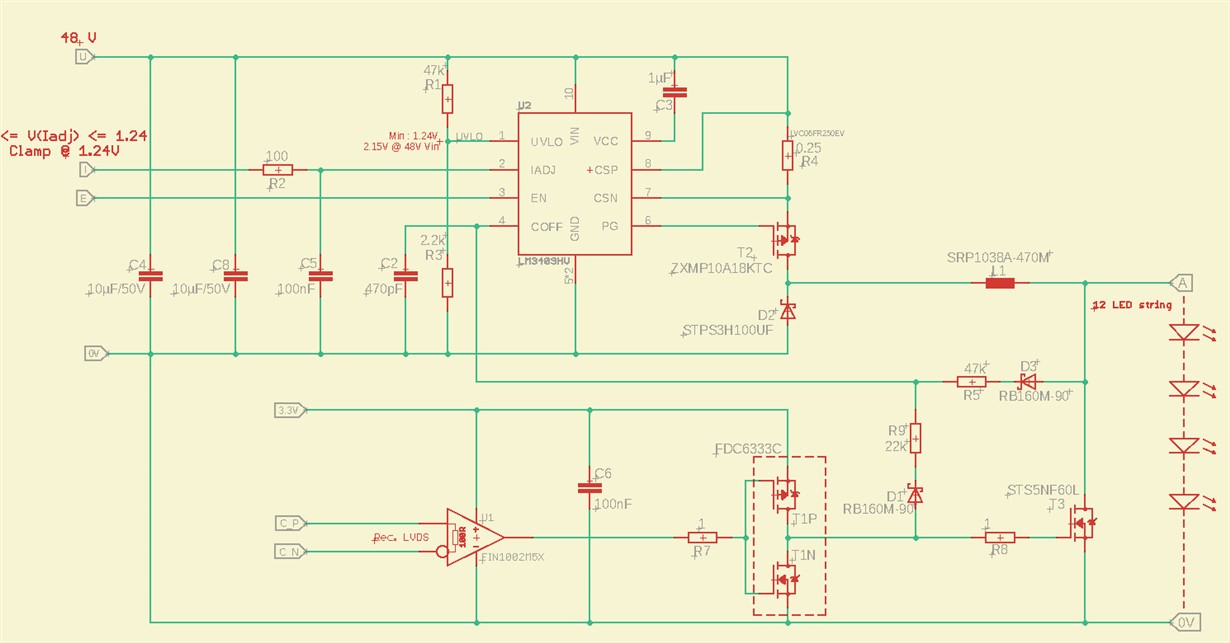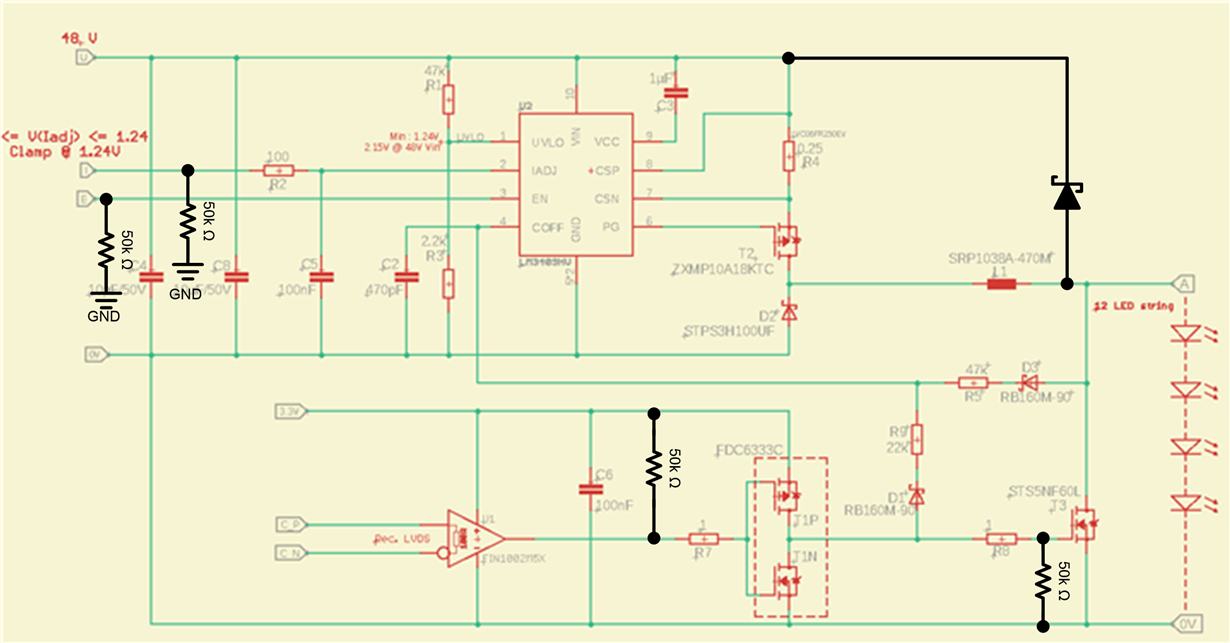Other Parts Discussed in Thread: LM3409
Hello,
I have a board with 48 LM3409HV driven with a picoZed board from Avnet. When I receive these SOM there is already a program in the FPGA.
As soon as I connect these 2 boards (power management board and picozed) I always have a current sense resistor burning and an IC exploding (1 out of 48).
I think this is because of the program loaded in the FPGA. Here is the schematic of a LED controller:
What could happen? Even if the shunt FET (T3) is always on and enable the IC should maintain the a good current value (about 0.5Amp).
The Iadj voltage comes from a DAC081 that should be at 0 V at startup. I was thinking at a too high frequency on the LVDS line, is this possible?
Rsns is 0.25 Ohm, 2W.
The solution is to clear the boot flash on the picoZed and reprogram with the right program but technicians sometime forget it.
Thanks, Serge.



